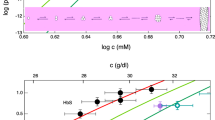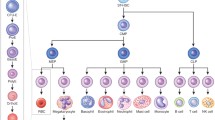Abstract
The inherited β-hemoglobinopathies (sickle cell disease and β thalassemia) are the result of a mutation in the adult (β) globin gene. The fetal globin chain, encoded by the γ globin genes, can substitute for the mutated or defective β globin chain, but expression of the γ globin gene is developmentally inactivated prior to birth. Reinducing expression of the normal fetal globin genes is a preferred method of ameliorating sickle cell disease and the β thalassemias. Stimulation of as little as 4–8% fetal globin synthesis in the bone marrow can produce >20% fetal hemoglobin in the peripheral circulation, due to enhanced survival of red blood cells containing both sickle and fetal hemoglobin, compared to those containing sickle hemoglobin alone. Butyric acid and butyrate derivatives are generally safe compounds which induce fetal hemoglobin production by stimulating the promoter of the fetal globin genes. An initial trial with the parent compound, delivered as Arginine Butyrate, has demonstrated rapid stimulation of fetal globin expression to levels that have been shown to ameliorate these conditions. Phase 1 trials of an oral butyrate derivative with a long plasma half-life have just begun. These agents now provide a specific new apporach for ameliorating these classic molecular disorders and merit further investigation in larger patient populations.
Similar content being viewed by others
Literature
Brittenham, G., Lozoff, B., Harris, W., Shrma, V. S., Marasingham, S., and Huisman, T. J., Sickle cell anemia and trait in a population in Southern India. Am. J. Hemat.2 (1977) 25–28.
Brittenham, G. M., Schechter, A. N., and Noguchi, C. T., Hemoglobin S polymerization: primary determinant of the hemolytic and clinical severity of the sickling syndromes. Blood65 (1985) 183–9.
Burns, L. J., Giauber, J., and Ginder, G. D., Butyrate induces selective transcriptional activation of a hypomethylated embryonic globin gene in adult erythroid cells. Blood72 (1988) 2: 1536–1542.
Daniel, P., Brazlek, M., Ceruitti, L., Pierl, F., Tardivel, I., Desmet, G., Baillet, J., and Chang, C., Pharmacokinetic study of butyric acid administered in vivo as sodium and arginine butyrate salts. Clinica chim. Acta181 (1989) 255–264.
DeSimone, J., Heller, P., Hall, L., and Zwiers, D., 5-Azacytidine stimulates fetal hemoglobin synthesis in anemic baboons. Proc. natl Acad. Sci. USA79 (1982) 4428–31.
Dover, G. H., Humphries, R. K., Moore, J. G., Ley, N. S., Charache, S. H., and Nienhuis, A. W., Hydroxyurea induction of hemoglobin F production in sickle cell disease: relationship between cytotoxicity and F cell production. Blood67 (1986) 735–738.
Ginder, G. D., Whitters, M. J., and Pohlman, J. K., Activation of a chicker embryonic globin gene in adult erythroid cells by 5-azacytidine and sodium butyrate. Proc. natl Acad. Sci. USA81 (1984) 3954–8.
Goldberg, M. A., Husson, M. A., and Bunn, H. F., Participation of hemoglobin A and F in polymerization of sickle hemoglobin. J. biol. Chem.252 (1977) 3414–3421.
Karlsson, S., and Neinhuis, A. W., Developmental regulation of human globia genes. A. Rev. Biochem.54 (1985) 1071–1108.
Ley, T. J., DeSimone, J., Anagnou, N. P., Keller, G. H., Humphries, R. K., Turner, P. H., Young, N. S., Heller, P., and Nienhuis, A. W., 5-Azacytidine selectively increases γ-globin synthesis in a patient with β+thalassemia. New Engl. J. Med.307 (1982) 1469–75.
MacArthur, B., and Sarnik, A. P., Quantitation of short-chain fatty acids in plasma. Clin. Chem.28 (1982) 1983–1986.
McDonagh, K. T., and Nienhuis, A. W., Induction of the human globin gene promoter in K562 cells by sodium butyrate: reversal of repression by CCAAT displacement protein. Blood78 Suppl 1 (1992) 255a.
Miller, A. A., Kurschel, E., Osieka, R., and Schmidt, C., Clinical pharmacology of sodium butyrate in patients with acute leukemia. Eur. J. Can. Clin. Oncol.181 (1987) 255–264.
Noguchi, C. T., Rodgers, G. P., Serjeant, G., and Schecter, A. N., Levels of fetal hemoglobin necessary for treatment of sickle cell disease. New Engl. J. Med.318 (1988) 96–99.
Novogrodsky, A., Dvir, A., Ravid, A., Shkoinik, T., Stenzei, K. H., Rubin, A. L., and Zaizov, R., Effect of polar organic compounds on leukemic cells-butyrate-induced partial remission of acute myelogenous leukemia in a child. Cancer15 (1983) 9–14.
Partington, G. A., Yarwood, N. J., and Rutherford, T. R., Human globin gene transcription in injectedXeonopus ooctyes: Enhancement by sodium butyrate. EMBO J.3 (1984) 2787–2788.
Perrine, R. P., Brown, M. H., Clegg, J. B., Weatherall, D. J., and May, A., Benign sickle cell anemia. Lancet11 (1972) 1163–1167.
Perrine, S. P., Greene, M. F., and Faller, D. V., Delay in the fetal globin switch in infants of diabetic mothers. New Engl. J. Med.312 (1985) 224–228.
Perrine, S. P., Rudolph, A., Faller, D. V., Roman, C., Cohen, R. A., Chen, S., and Kan, Y. W. Butyrate infusions in the ovine fetus delay the biologic clock for globin gene switching. Proc. natl Acad. Sci. USA85 (1988) 8540–8542.
Perrine, S. P., Miller, B. A., Faller, D. V., Cohen, R. A., Vichinsky, E. P., Hurst, D., Lubin, B. H., and Papayannoupoulu, Th., Sodium butyrate enhances fetal globin expression in crythroid progenitors of patients with HbSS and thalassemia. Blood74 (1989) 454–459.
Perrine, S. P., Faller, D. V., Swerdlow, P., Sytkowski, A. J., Qin, G., Miller, B. A., Olivieri, N. F., Rudolph, A. M., Kan, Y. W., Stamatoyannopoulos, G., and Nienhuis, A. W. (Eds), Pharmacologic prevention and reversal of globin gene switching, in: The Regulation of Hemoglobin Switching, pp. 425–436. Johns Hopkins Univ. Press 1992.
Perrine, S. P., Ginder, G., Faller, D. V., Dover, G., Ikuta, T., Witkowska, H. E., Cai, S-P, Vichinsky, E. P., and Olivieri, N. F., A short-term trial of butyrate to stimulate fetal globin gene expression in the β globin gene disorders. New Engl. J. Med. (1993) in press.
Platt, O. S., Orkin, S. H., Dover, G., Beardsley, G. P., Miller, B., and Nathan, D. G., Hydroxyurea enhances fetal hemoglobin production in sickle cell anemia. J. clin. Invest.74 (1984) 652–6.
Platt, O. S., Thorington, B. D., Brambilla, D. J., Miller, P. F., Rosse, W. F., Vichinsky, E., and Kinney, T. R., Pain in sickle cell disease. New Engl. J. Med.325 (1991) 11–61.
Rodgers, G. P., Dover, G. J., Noguchi, C. T., Schechter, A. N., and Nienhuis, A. W., Hematologic responses of patients with sickle cell disease to treatment with hydroxyurea. New Engl. J. Med.322 (1990) 1037–1045.
Wood, W. G., and Weatherall, D. J., Developmental genetics of the human hemoglobins. Biochem. J.215 (1983) 1–10.
Wood, W. G., Pembrey, M. E., Serjeant, G. R., Perrine, R. P., and Weatherall, D. J., Hb F synthesis in sickle cell anemia: a comparison of Saudi Arab cases with those of African origin. Br. J. Haematol.45 (1980) 431–445.
Author information
Authors and Affiliations
Rights and permissions
About this article
Cite this article
Perrine, S.P., Faller, D.V. Butyrate-induced reactivation of the fetal globin genes: A molecular treatment for theβ-hemoglobinophaties. Experientia 49, 133–137 (1993). https://doi.org/10.1007/BF01989417
Issue Date:
DOI: https://doi.org/10.1007/BF01989417




